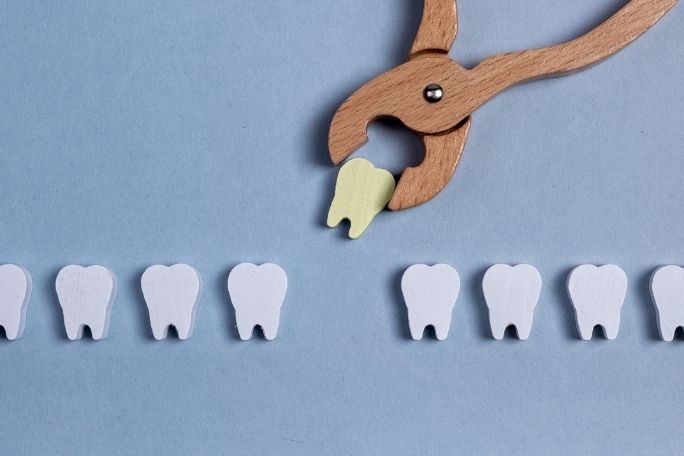Lesson summary
In this lesson, students learn about how teeth can repair themselves through remineralisation.
They carry out a simple experiment to learn about how things can dissolve in solution, and then explore ways of separating substances from each other. The lesson finishes, like the previous lessons in the unit, with a reflection on teaching. The reflection will support the learning in the final lesson in the unit, Communicating the Science of Tooth Decay.
Learning intentions:
Students understand...
- some of the ways of separating substances from each other
- how teeth repair themselves after eating.
Success criteria:
Students can...
- better manage their oral health
- reflect critically on the practice of teaching and learning.
Lesson guides and printables
Curriculum links
Select your curriculum from the options below.
Lesson details
Curriculum mapping
Australian Curriculum content description:
Science, Years 9 & 10
Year 9
- Chemical reactions involve rearranging atoms to form new substances; during a chemical reaction mass is not created or destroyed (ACSSU178)
- Chemical reactions, including combustion and the reactions of acids, are important in both non-living and living systems and involve energy transfer (ACSSU179)
Year 10
- Different types of chemical reactions are used to produce a range of products and can occur at different rates (ACSSU187)
Relevant parts of Year 9 achievement standards: They [students] are introduced to the notion of the atom as a system of protons, electrons and neutrons, and how this system can change through nuclear decay. They learn that matter can be rearranged through chemical change and that these changes play an important role in many systems.
Relevant parts of Year 10 achievement standards: Students develop their understanding of atomic theory to understand relationships within the periodic table.
This lesson is part of the wider unit of work SugarByHalf – Science – Years 9-10
Time required: 65 mins
Level of teacher scaffolding: High – monitoring experiments and student research
To view our NZ Curriculum alignment click here.
Resources required
- A jug for boiling water
- Beakers
- Sugar cubes
- Stephan Curve image
Additional info
These lessons were developed in partnership with SugarByHalf and the Australian Dental Association.
SugarByHalf promotes action to reduce sugar-related diseases so that we can live better, stronger and healthier lives.
Their message is simple: to reduce added sugar consumption by half. Eating too much added sugar is a key driver of serious health problems including obesity, type 2 diabetes, heart disease, tooth decay, dementia and mental health conditions. A poor diet also puts children behind their peers, affecting brain development, sleep and ability to learn. Poor diet choices ultimately mean that this generation of children could be the first in modern history to live shorter lives than their parents.
Much of the added sugar in our diet comes from the processed foods and drinks we consume. On average, we consume 14-16 teaspoons of added sugar per day. Teenagers consume more than 20 teaspoons per day. The World Health Organisation says we should limit our daily added sugar intake to 6 teaspoons for good health. To put that in perspective, there are 4 grams of sugar in one teaspoon. If something has 20 grams of sugar, that's 5 teaspoons of sugar.
This English lesson focuses on developing the skills and knowledge students need to critically consider messages about food and drink they are exposed to, thereby equipping them to be able to make healthy choices.
Talking about health
- Be mindful of students who may experience weight stigma. Some students may be sensitive to conversations around weight, body size or shape. Terms including obesity, weight issues, weight-problem and fat can be stigmatising for some people because they assign blame. It is important to note individual preferences around language vary. Research has shown using the terms ‘weight’, ‘weight gain’, ‘healthy weight’, ‘unhealthy weight’, and ‘high BMI’ are preferred as better alternatives.
- Be mindful about how you use the word ‘diet’. We recommend focussing students on the positive impacts of healthy nutrition and healthy lifestyles which help us to have stronger bodies and minds, feel good and sleep well.
- Steer students away from any focus on appearances by communicating that appearance does not determine your worth. We recommend the fact sheets from the Butterfly Foundation on body image tips.
- Avoid using labels such as obese or diabetic. Refer to people living with diabetes, people living with cancer, people with high BMI etc.


Welcome back!
Don't have an account yet?
Log in with:
Create your free Cool.org account.
Many of our resources are free, with an option to upgrade to Cool+ for premium content.
Already have an account?
Sign up with:
By signing up you accept Cool.org's Terms and Conditions(Opens in new tab) and Privacy Policy(Opens in new tab).